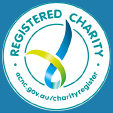When Aoife Lowe, our Respiratory Scientist at Respiratory Care WA, walked into the Thoracic Society of Australia and New Zealand (TSANZ) Scientific Conference on August 9th, 2024, she knew she was in for a day of insights and inspiring discussions. Held at the University of Western Australia (UWA), this event is the pinnacle for respiratory and sleep medicine professionals across Australia and New Zealand. For Aoife, it was an opportunity not just to learn but to bring back innovative ideas to enhance patient care at RCWA.
Associate Professor Steve Mutsaers, the TSANZ WA Branch President opened the conference and soon after, the spotlight was on Professor Gary Anderson. His keynote, titled “Change not Cope: Working Towards Cures,” was anything but ordinary. As a Pharmacologist, Immunologist, and the Founding Director of the Lung Health Research Centre at the University of Melbourne, Professor Anderson is no stranger to pushing boundaries. But what made his presentation truly great was his unique blend of science and art—literally. With a Master of Fine Arts under his belt, he used vivid artistic analogies to illustrate how innovation often starts with the audacity to challenge the status quo. His vision for the “Cure Asthma” program, aimed at eradicating asthma in children and preventing its progression to chronic disease, resonated deeply with Aoife. It was a call to action for the entire respiratory community to think beyond managing symptoms and to aim for lasting cures.
The energy from Professor Anderson’s talk carried over into the next segment, where a series of oral abstracts shared research ready to make waves in respiratory care. A stand-out for Aoife was a study on the Lung Clearance Index, a promising tool for diagnosing bronchiectasis in children without relying on CT scans. The potential of this technology to revolutionize Lung Function Testing sparked her imagination, leading to an engaging conversation with researcher Julia Casella about how this could soon become a staple in clinical practice.
Another study that caught Aoife’s attention delved into the association between early respiratory viral infections and the development of recurrent wheezing—a topic close to her heart, given the number of young patients she sees who struggle with post-viral wheeze. The insights from this research could potentially reshape how Respiratory Care WA approaches treatment for these children, offering new hope for better outcomes.
As the day progressed, Aoife chose to hear more about the world of asthma and wheeze, attending a breakout session that featured some of the brightest minds in the field. Dr. Sanjay Ramakrishnan’s discussion on asthma exacerbation research was particularly relevant, offering a sneak peek into studies set to be presented at international conferences later this year. But it was Dr. Kimberley Wang’s exploration of the role of adipose tissue in respiratory disease that truly opened Aoife’s eyes. The link between obesity and increased asthma risk—complete with hard-hitting data on how even a 1% increase in lung adipose tissue can impair breathing—was a stark reminder of the broader health challenges facing society today.
As the sun set on the day, the conference continued with a dinner event where Professor Philip Thompson, a luminary in respiratory medicine, shared reflections on his 50-year career. His anecdotes of how respiratory care has evolved from rudimentary treatments to sophisticated therapies were both nostalgic and motivating. The evening capped off with a lively debate on the future of research funding posing the question “should grant lotteries replace traditional funding schemes?” The discussion left attendees with much to ponder.
Aoife’s feedback is she left the TSANZ conference with more than just notes and handouts. “I have a renewed sense of purpose and a toolkit of innovative ideas ready to be implemented at Respiratory Care WA. The conference was a powerful reminder that the field of respiratory science is not just about treating symptoms, but about pushing the boundaries of what’s possible, striving for cures, and ultimately improving the quality of life for patients”.
For Aoife and her colleagues at Respiratory Care WA, the insights gained from the TSANZ conference will undoubtedly breathe new life into their work, ensuring they remain at the forefront of respiratory health care in Australia.



